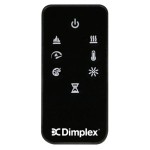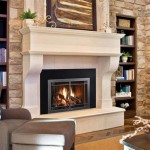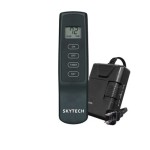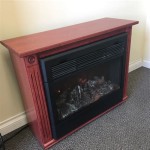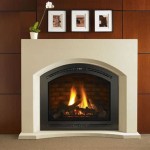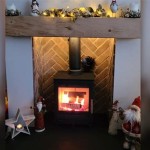How To Mount a TV Above a Fireplace Without Studs
Mounting a television above a fireplace presents a compelling aesthetic for many homeowners, offering a centralized entertainment focal point. However, the challenge arises when the wall above the fireplace is not constructed with traditional wooden studs, a common circumstance in many newer constructions or renovations that utilize materials like concrete, brick, or metal studs. Successfully mounting a television in these situations requires careful planning, the right tools, and an understanding of alternative mounting strategies that ensure both safety and stability.
The absence of wooden studs necessitates a departure from conventional mounting techniques. Standard stud finders and drywall screws become ineffective, requiring the adoption of specialized hardware and installation methods designed for non-wood substrates. Choosing the appropriate approach depends largely on the wall material and the weight of the television. Ignoring these factors can lead to a compromised installation, resulting in a falling television and potential damage to the wall, the television itself, and even personal injury.
This article will explore several methods for mounting a television above a fireplace without the use of wooden studs, detailing the necessary tools, materials, and step-by-step instructions for each approach. The goal is to provide a comprehensive guide enabling homeowners to achieve a secure and aesthetically pleasing television installation, even in challenging structural environments.
Understanding Wall Composition and Load Capacity
The first and most crucial step in mounting a television above a fireplace without studs involves accurately identifying the composition of the wall. Common materials include drywall over concrete or brick, metal studs, or a solid surface like brick or stone. Each material has inherent limitations in terms of load-bearing capacity, which directly impacts the size and weight of the television that can be safely mounted.
Drywall, while relatively easy to work with, offers minimal structural support on its own. When installed over concrete or brick, the underlying material becomes the primary load-bearing element. In this scenario, specialized anchors designed for concrete or brick are necessary, bypassing the drywall entirely. These anchors expand within the solid material, providing a secure hold. The type of anchor chosen should be rated to hold significantly more weight than the television to account for dynamic forces and potential strain over time. Consult the anchor manufacturer's specifications to determine the appropriate weight rating.
Metal studs, commonly used in modern construction, present a different set of challenges. Although stronger than drywall alone, metal studs are often thinner and more flexible than their wooden counterparts. Standard drywall anchors are generally ineffective in metal studs. Instead, self-drilling metal stud anchors or toggle bolts are required. These anchors grip the metal stud from the inside, providing a more secure connection. It is essential to distribute the weight of the television across multiple studs whenever possible. Using a wider mounting bracket can help achieve this, ensuring a more stable and balanced installation.
Solid surfaces like brick or stone offer the most robust mounting platform, but require specialized drilling techniques. Masonry drill bits are necessary to penetrate these materials, and heavy-duty concrete anchors are essential for secure attachment. Drilling into brick or stone can be challenging and requires precision and patience. Ensure the drill bit is properly cooled and that the holes are drilled to the correct depth for the chosen anchors.
Before proceeding with any installation, it is advisable to consult with a qualified structural engineer or contractor, particularly if there is any doubt about the wall's load-bearing capacity. They can assess the wall's composition, evaluate its structural integrity, and recommend the most appropriate mounting solution.
Choosing the Right Mounting Hardware
Selecting appropriate mounting hardware is paramount for a safe and secure television installation, especially when dealing with non-standard wall structures. The choice of hardware depends heavily on the wall material and the weight of the television. Investing in high-quality, appropriately rated hardware is essential to prevent accidents and ensure the longevity of the installation.
For drywall over concrete or brick, concrete sleeve anchors are a reliable option. These anchors consist of a bolt surrounded by a sleeve that expands as the bolt is tightened, gripping the concrete or brick. The diameter and length of the anchor should be chosen based on the weight of the television and the thickness of the drywall. Ensure that the anchor is long enough to penetrate the concrete or brick adequately. Follow the manufacturer's instructions for drilling pilot holes and installing the anchors correctly.
When working with metal studs, self-drilling metal stud anchors provide a secure connection. These anchors are designed to drill directly into the metal stud without requiring a pilot hole. Once inserted, they expand and grip the inside of the stud, creating a strong hold. Toggle bolts are another viable option for metal studs. These bolts feature spring-loaded wings that fold out behind the stud, providing a wide bearing surface and distributing the weight more evenly. It's important to choose toggle bolts with sufficient length to accommodate the thickness of the wall and the mounting bracket.
For solid brick or stone walls, heavy-duty concrete anchors are the standard choice. Wedge anchors and expansion bolts are two common types. Wedge anchors are inserted into pre-drilled holes and then hammered in, causing the wedge to expand and grip the sides of the hole. Expansion bolts operate similarly, with a cone-shaped end that expands as the bolt is tightened. The diameter and length of the anchors should be chosen based on the weight of the television and the depth of the brick or stone. Using a hammer drill is highly recommended for drilling into these hard materials.
In addition to the anchors, selecting the correct mounting bracket is also crucial. Full-motion brackets, which allow for tilting and swiveling, place greater stress on the mounting hardware than fixed brackets. If using a full-motion bracket, ensure that the chosen anchors and the wall structure can support the increased load. Consider using a wider mounting bracket that distributes the weight across a larger area and utilizes more anchors.
Before purchasing any hardware, carefully review the weight rating and specifications. Always err on the side of caution and choose anchors and brackets that are rated to hold significantly more weight than the television. This provides a safety margin and ensures that the installation remains secure over time.
Installation Techniques and Safety Precautions
Proper installation techniques and adherence to safety precautions are paramount when mounting a television above a fireplace without studs. Incorrect installation can lead to a compromised mount, potentially resulting in the television falling and causing damage or injury. Taking the time to plan the installation carefully, gather the necessary tools, and follow the instructions meticulously is essential for a successful outcome.
Before beginning the installation, turn off the power to the area and ensure that no electrical wires or plumbing are located behind the wall where the television will be mounted. Use a stud finder equipped with AC wire detection to scan the area thoroughly. If any wires or pipes are detected, consult with a qualified electrician or plumber before proceeding.
Once the mounting location is determined, use a level to mark the desired height and position of the television. Accurately measure and mark the locations for the anchor holes, ensuring they align with the mounting bracket's holes. Use a drill with the appropriate drill bit for the wall material to drill the pilot holes. For concrete, brick, or stone, use a hammer drill and a masonry drill bit. Drill the holes to the depth specified by the anchor manufacturer.
After drilling the pilot holes, insert the anchors into the holes and tighten them according to the manufacturer's instructions. Ensure that the anchors are securely fastened and that they are flush with the wall surface. Attach the mounting bracket to the anchors, using the appropriate screws or bolts. Tighten the fasteners securely, but avoid over-tightening, which could damage the anchors or the mounting bracket.
With the mounting bracket securely attached to the wall, carefully lift the television and attach it to the bracket, following the manufacturer's instructions. Ensure that the television is properly aligned and that all connections are secure. Use a level to verify that the television is level and make any necessary adjustments.
Once the television is mounted, conceal the cables using a cable management system. This not only improves the aesthetics of the installation but also prevents the cables from becoming a safety hazard. Cable sleeves, wall plates, and in-wall cable routing kits are all viable options for concealing the cables.
After the installation is complete, perform a thorough inspection to ensure that the television is securely mounted and that all connections are properly made. Gently tug on the television to test its stability. If there is any movement or instability, re-tighten the anchors or consult with a qualified professional. Finally, ensure that the area is clean and free of debris before turning the power back on.
By carefully considering the wall composition, selecting the appropriate mounting hardware, and following proper installation techniques, it is possible to mount a television above a fireplace without studs safely and securely. However, if there is any doubt about the wall's load-bearing capacity or the installation process, it is always best to consult with a qualified structural engineer or contractor.

Mounting A Tv Over Fireplace How Does It Work Echogear

How To Choose The Right Tv Wall Mount Bracket For Your And

Tv Wall Mount Installation With Wire Concealment Over Fireplace

Hide Cords Of A Tv Mounted Over Fireplace Powerbridge

How To Mount A Tv Over Fireplace Vertical Chimney Care

Can I Mount My Tv Above The Fireplace

Can I Mount My Tv Above The Fireplace

ᑕ❶ᑐ What To Consider Before Mounting A Tv Above Fireplace

How To Hang A Tv Wall Mount Without Studs Mountyourbox

Mount Tv To Wall With No Studs
Related Posts



